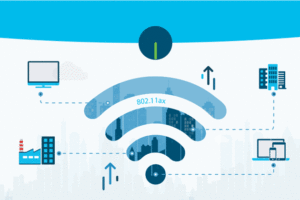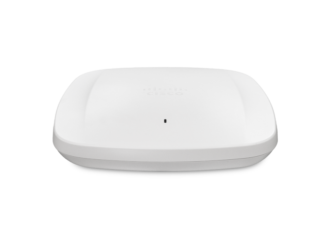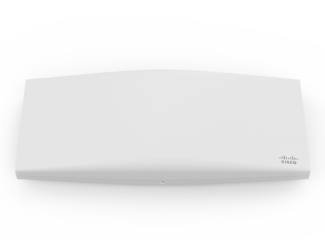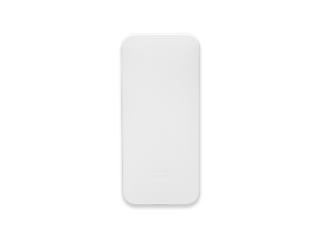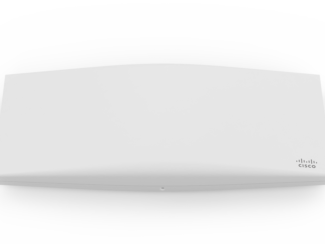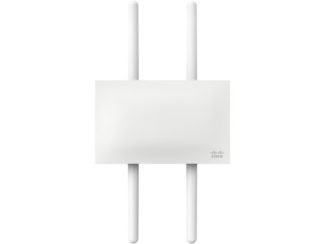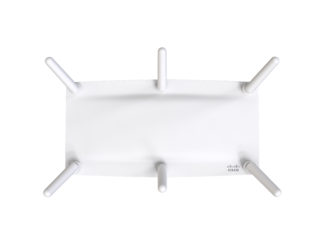The Next Generation of Wireless Networking
The next Wi-Fi standard, Wi-Fi 6, delivers higher capacity, better coverage, fewer disconnects, and lower latency.
Wi-Fi 6 represents an exciting step change for wireless networking. As well as providing a welcome boost to performance on both the 5 Ghz and 2.4 Ghz bands, a higher density of clients can take advantage of new efficiencies to communicate concurrently, completing their communications faster so that others can get their turn sooner.
New clients will also benefit from battery savings thanks to the new ability to schedule their communications—particularly useful for IoT devices. Multigigabit switches, also available from Meraki, provide the high performance wired connection these access points need over existing cabling.
|
|
The latest emerging Wi-Fi standardLearn about the newest generation of Wi-Fi: 802.11ax, also known as Wi-Fi 6. Built on the strengths of 802.11ac, 802.11ax adds flexibility and scalability that lets new and existing networks power next-generation applications. |
Benefits of Wi-Fi 6
|
|
||||
|
|
Cloud-Managed, Indoor 802.11ax Access Points
|
|
The next generation of the Wi-Fi standard is Wi-Fi 6, also known as 802.11ax, the latest step in a journey of nonstop innovation. The standard builds on the strengths of 802.11ac while adding efficiency, flexibility, and scalability that allows new and existing networks increased speed and capacity with next-generation applications. The Institute of Electrical and Electronics Engineers (IEEE) proposed the Wi-Fi 6 standard so it can couple the freedom and high speed of Gigabit Ethernet wireless with the reliability and predictability found in licensed radio. |
What are the benefits of Wi-Fi 6?
Wi-Fi 6 allows enterprises and service providers to support new and emerging applications on the same wireless LAN (WLAN) infrastructure while delivering a higher grade of service to older applications. This scenario sets the stage for new business models and increased Wi-Fi adoption.
Is Wi-Fi 6 different from 802.11ax?
No, they are the same. The Wi-Fi Alliance started a campaign to coin the term “Wi-Fi 6” when referring to the IEEE 802.11ax standard. It indicates that it is the sixth generation of Wi-Fi. The premise was to simplify the marketing message to help 802.11ax be better positioned relative to the Third Generation Partnership Project (3GPP) standards used in cellular (such as 5G).
When will Wi-Fi 6 be ratified?
The IEEE is currently scheduled to ratify the Wi-Fi 6 amendment in the latter half of 2019. The Wi-Fi Alliance has a similar timeline for Wi-Fi 6 certification. The latest official estimate for ratification is always available at the 802 IEEE website under the “RevCom & Standards Board Final or Continuous Process Approval” column.
What you can expect from Wi-Fi 6
Wi-Fi 6 benefits
Wi-Fi 6 will build on the success of 802.11ac. It will let access points support more clients in dense environments and will provide a better experience for typical wireless LAN networks. It will also provide a more predictable performance for advanced applications such as 4K or 8K video, high-density high-definition collaboration apps, all-wireless offices, and the Internet of Things (IoT). Wi-Fi 6 will drive Wi-Fi toward the future as the growth of wireless continues.
See Cisco technical white paper: IEEE 802.11ax: The Sixth Generation of Wi-Fi
Wi-Fi 6 access points
There are some Wi-Fi 6 access points already on the market, targeted for early adopters and customers who are eager to test the new standard. The access points that are released early will be pre-standard APs because the standard will not yet have been ratified. This means key features that are part of Wi-Fi 6 may not be supported on some of these initial, pre-standard access points. However, when available, some of these access points will be able to become certified through software updates and Wi-Fi 6 features will be supported. This approach is similar to the introduction of prior generations such 802.11ac and 802.11n.
Wi-Fi 6 technology dimensions
- Denser modulation using 1024 Quadrature Amplitude Modulation (QAM), enabling a more than 35 percent speed burst.
- Orthogonal Frequency Division Multiple Access (OFDMA)-based scheduling to reduce overhead and latency.
- Robust high-efficiency signaling for better operation at a significantly lower Received Signal Strength Indication (RSSI).
- Better scheduling and longer device battery life with Target Wake Time (TWT)
Will Wi-Fi 6 be compatible with 802.11ac?
As with every other recent Wi-Fi advance, Wi-Fi 6 will be backward compatible, building on existing technologies and making them more efficient.


